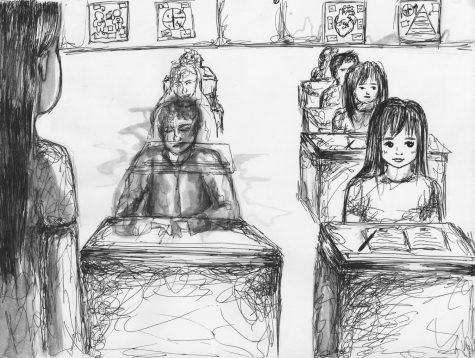Let’s talk about sex (ed)
I was 6 years old when I had a crush on another girl for the first time. I was 10 years old when I learned that two girls are allowed to be in love.
During the uncomfortable sex education lesson in fifth grade, after giggling at diagrams of male and female reproductive parts, the teacher told us about families with two mothers or two fathers.
This lesson and the conversation I had with my parents afterwards affirmed the feelings I’d experienced my entire life. When I sat in Health Education 161 at Glenbrook North five years later, I did not feel the same affirmation of my bisexual identity.
In our unit on healthy teen relationships, the examples all involved heterosexual couples. I remember the teacher mentioning same-sex relationships during the unit on sexually-transmitted diseases when we learned that “male-to-male sexual contact” was the most common way AIDS is transmitted. We learned about the taboo of having HIV or AIDS and the difficulty of receiving treatment. The lessons were taught through a historical lens that was disconnected from the daily lives of students in the room.
When students are assumed to be straight and cisgender, meaning they identify with the sex assigned at birth, it sends the message that LGBTQ+ youth do not exist. When same-sex relationships are discussed only through the lens of life-threatening STDs, we are taught that same-sex relationships are dangerous and outside of the norm.
In health class, we labeled diagrams of the male and female reproductive systems, but our discussion did not extend to gender identity or how it differed from physical anatomy. This clinical approach to discussing gender fails to acknowledge the existence of students who identify outside the gender binary of male or female.
While gender identity and sexuality are hard to discuss due to their controversial nature, especially in a classroom of bored sophomores, sex education classes are already spaces where teachers tackle taboo topics from STDs to sexual assault. While LGBTQ+ issues may be considered “political,” they are relevant to the lives, relationships and wellbeing of students in the classroom.
Introducing LGBTQ+ topics in the classroom must go beyond a unit on gender identity and sexuality segregated from other topics. To normalize LGBTQ+ issues, the topics we already cover like healthy relationships and safe sex practices should include information that applies to LGBTQ+ students.
In the unit about mental health, we should go into deeper discussion about the causes of increased mental illness and suicide rates in LGBTQ+ youth. In the unit about identity and the factors that shape it, we should discuss gender identity and sexuality as part of them. The unit about relationships should represent relationships that are not straight. If we fail to do this, LGBTQ+ youth will continue to feel invisible.
I was 14 years old when I came out to my parents.
Now I am 17 years old, and I am open about my sexuality. Had I not been in sex ed that day in fifth grade, I may have stayed silent.


